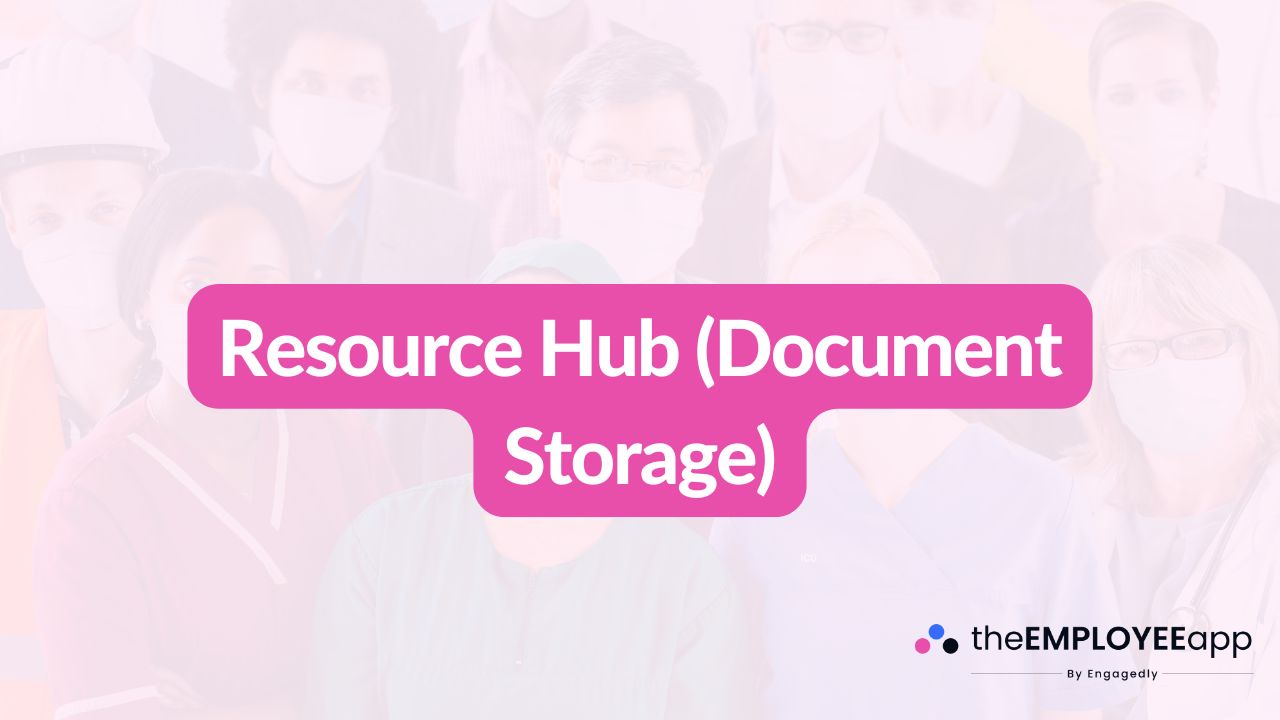
A resource hub (document storage) is a centralized digital space designed to store, organize, and manage documents and resources in one accessible location. Think of it as the digital equivalent of a library—but one that’s always available, always up to date, and searchable in seconds.
At its core, a resource hub ensures critical information—policies, guides, templates, training materials, project documents, FAQs—are all housed under one roof. It eliminates the chaos of scattered folders, misplaced files, and inconsistent document versions. Users can easily search for documents using keywords, metadata, or filters, and retrieve what they need in moments rather than minutes or hours.
Why organizations need a resource hub for document storage
For companies of any size, especially those with distributed teams or remote employees, a centralized resource hub is a productivity game-changer. It drives efficiency by reducing the time employees spend hunting for files. It ensures everyone is using the latest document version—no more confusion over outdated copies. It also supports onboarding, as new hires instantly find the resources they need.
When set up with clear permissions, a resource hub helps protect sensitive documents while making public content accessible. These access controls are vital for compliance and safeguarding intellectual property. And by replacing physical storage or ad-hoc digital archives, a resource hub significantly lowers costs tied to printing, copying, and file storage.
Key features of an effective resource hub
A powerful resource hub includes:
Centralized storage: A single location for all documents—Word files, PDFs, presentations, spreadsheets, images—available on any device.
Search and filtering: Advanced search by keywords, metadata, tags, or full-text content, ensuring users find the right file swiftly.
Permission controls: Secure access based on user roles, ensuring only authorized personnel can view, edit, or delete certain documents.
Version control: Automatic management of document versions prevents mistakes and preserves older copies for auditing or rollback.
User-friendly interface: Intuitive layouts and navigation that require minimal training, so teams adopt quickly.
Backup and security: Cloud-based or secure on-premises backup protects files from data loss or catastrophic events.
Categorization & indexing: Group documents by project, department, type, or date, and add metadata for efficient retrieval.
Collaboration tools: Some hubs integrate comments, document sharing, and feedback features to streamline teamwork.
Benefits at a glance
Efficiency gains — No more time wasted searching for documents or dealing with outdated files.
Consistent information — One source of truth ensures everyone is working with the same data.
Cost reduction — Less reliance on physical storage, printing, and filing systems.
Improved onboarding — New employees instantly access essential documents, making ramp-up faster.
Regulatory compliance — Audit trails, version history, and access logs help meet legal and industry standards.
Enhanced collaboration — Teams share, update, and discuss documents in a single platform.
Best practices for setting up a resource hub
Start by listing all document types your team uses—like HR policies, SOPs, training manuals, project templates, and announcements. Define clear roles and permissions: who can read, edit, or upload. Use consistent naming conventions and metadata—such as document type, department, or date—to categorize and improve searchability.
Make sure the hub is accessible on multiple devices, especially for mobile or frontline workers. Encourage teams to update documents regularly and retire outdated files. Train employees on search functions and organization standards to foster adoption. Finally, select a platform that integrates with your existing tools—like intranets, communication apps, or HR systems—to avoid workflow disruptions.
The evolving role of the resource hub
As workplaces embrace hybrid models, AI-enhanced hubs are emerging—able to suggest relevant resources, auto-tag documents, and personalize content based on user roles or tasks. Document hubs are transforming from static archives into dynamic knowledge centers that anticipate needs and support continuous learning.
In today’s fast-moving world, a resource hub for document storage is more than a repository—it’s a strategic tool that streamlines workflows, secures knowledge, and keeps teams aligned. By investing in a hub that’s searchable, secure, and user-friendly—and maintaining it with thoughtful structure and governance—organizations ensure that information is always at everyone’s fingertips, driving performance and collaboration forward.
